Last Chance to Catch NYC's Holiday Notalgia Train
We met the voices of the NYC subway on our nostalgia ride this weekend!



By the turn of the twentieth-century, New York was in need of a new county courthouse. The Tweed Courthouse (officially the New York County Supreme Courthouse) had outlasted its namesake and the judiciary was ready to move to a new location. In 1903, the New York State Legislature created a “Courthouse Board,” which was responsible for approving and overseeing the design and building of a new county courthouse.
The glacial pace of New York’s government caused it to take ten years to select Guy Lowell as the project’s architect. It is interesting to note that Lowell beat out such luminaries as Cass Gilbert (architect of the Woolworth Building), who later implemented his design when constructing the adjacent Federal Courthouse.
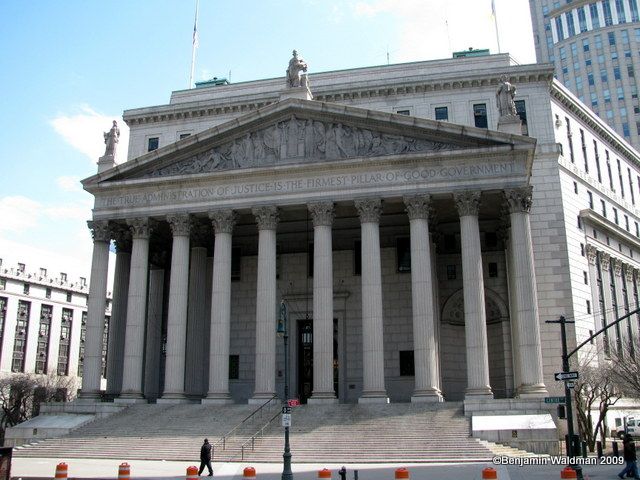
Lowell submitted two designs to the committee. His first design consisted of a hexagonal structure and his second design, which won him the competition, a grand circular structure modeled on the Roman Coliseum. When construction finally commenced in 1919, budget constraints forced Lowell to return to his original hexagonal design, albeit on a smaller scale. On February 17, 1927, the Supreme Court, Civil Branch, New York County and the New York County Clerk moved into their new home. A grand dedication ceremony included Benjamin Cardozo, Charles Evans Hughes, and Robert F. Wagner. Sadly, Lowell had died a week earlier.
Just below the building’s frieze, Lowell placed a quote from George Washington concerning justice (see above).
The quote comes from a 1789 letter from Washington, to Attorney General Edmund Randolph. In full, the quote reads:
“Impressed with a conviction that the due administration of justice is the firmest pillar of good Government, I have considered the first arrangement of the Judicial department as essential to the happiness of our Country, and to the stability of its political system; hence the selection of the fittest characters to expound the law, and dispense justice, has been an invariable object of my anxious concern.”
When read in its original context, it is quite evident that Lowell, or someone else in the design team, mistakenly exchanged the word due for true. This mistake has been etched in stone ever since.
The building’s interior is even more impressive than its exterior, which is well known from its placement in the introduction to the television show Law & Order. On March 24, 1981, the New York City Landmarks Preservation Commission designated the interior of this opulent courthouse a landmark ensuring that this architectural treasure will continue to survive.


In addition to its monumental masonry, the courthouse possesses a number of impressive murals. The rotunda’s beautiful WPA murals were designed by the Italian artist Attilio Pusterla and painted by him and a team of artists. The murals were completed between 1934 and 1936. They are entitled, “The History of the Law,” and they consist of six lunettes, which depict the law across different civilizations. Assyrian and Egyptian, Hebraic and Persian, Greek and Roman, Byzantine and Frankish, English and American civilizations are illustrated on the six lunettes. Above the seated figures are portraits of six lawgivers: Hammurabi, Moses, Solomon, Justinian, Blackstone and John Marshall.


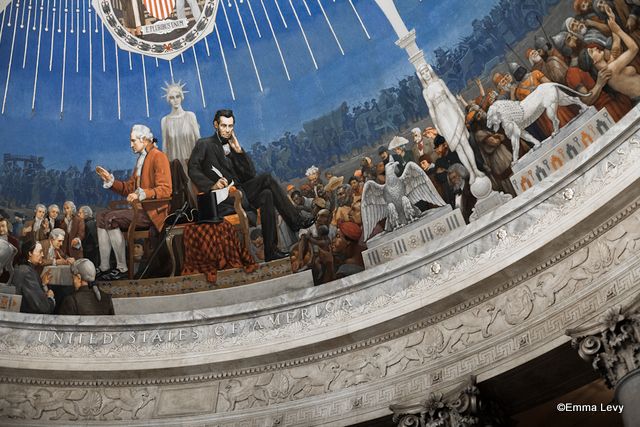
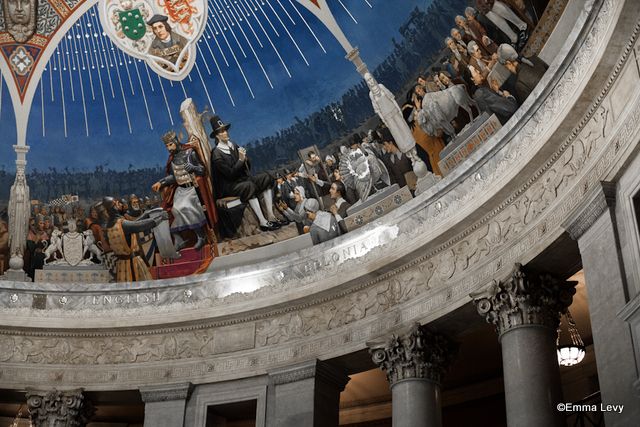

Even the hallway leading to the rotunda from the main entrance is filled with brightly colored murals, just make sure to look up.

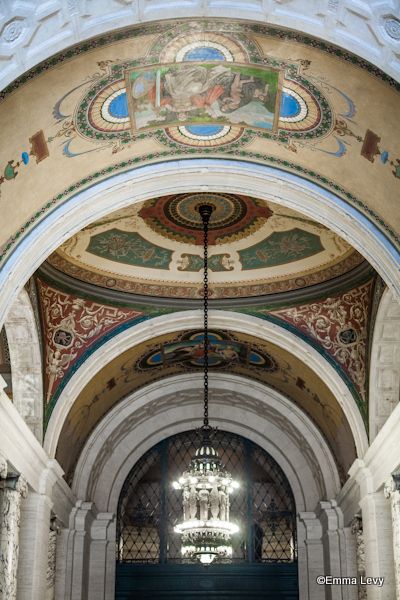

To conclude our Untapped tour of the courthouse, we journeyed to the fourth floor to scope out the murals of old New York by Robert K. Ryland and those of what used to be “contemporary” New York by Pusterla, Andres T. Schwartz, Withrop Turney, and John Edwin Jackson. These murals were also painted under the direction of the WPA.
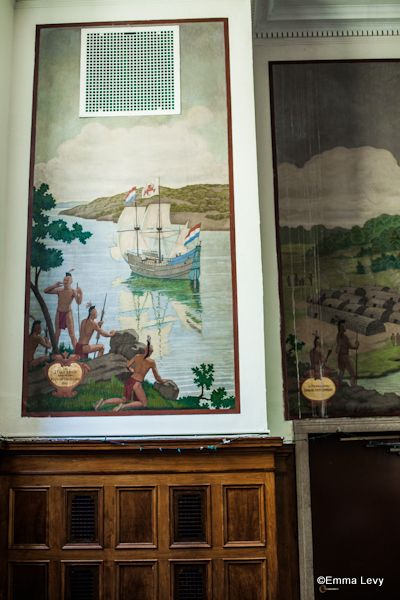

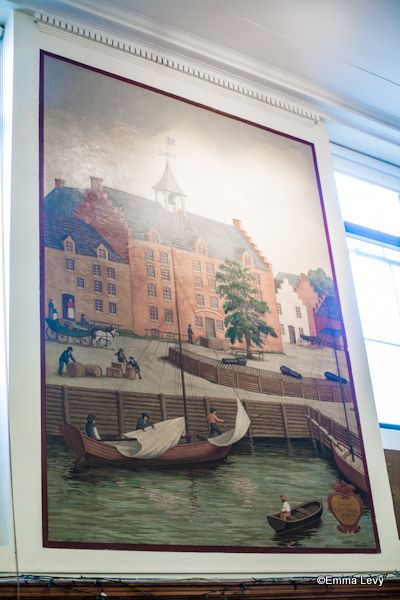
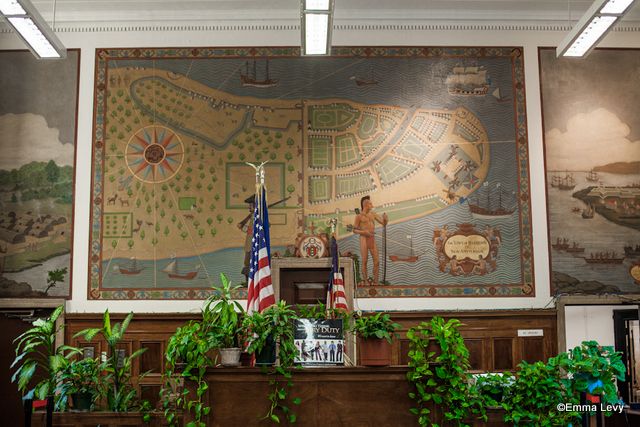


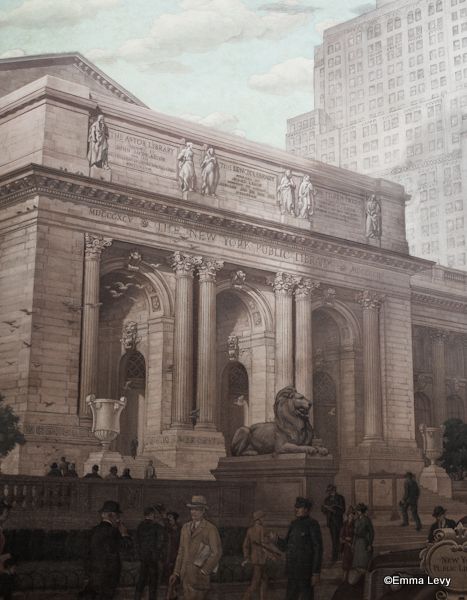
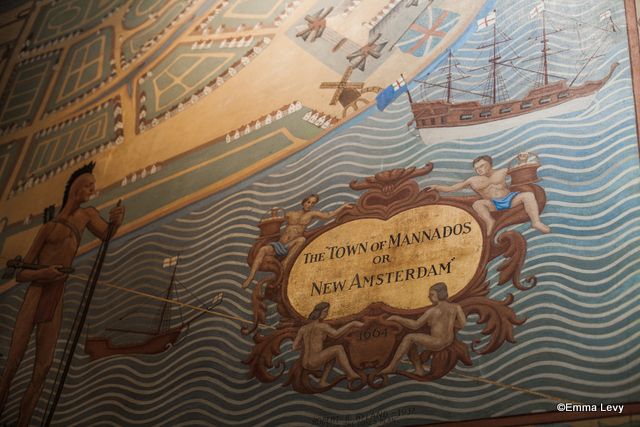
Subscribe to our newsletter